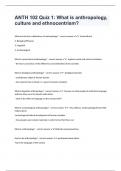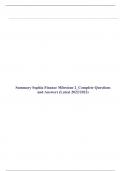Lecture notes
A* Microeconomics Excellence: Edexcel Business (A Level) Comprehensive Revision Guide
- Module
- Microeconomics (ECONOMICSA)
- Institution
- PEARSON (PEARSON)
Embark on a journey to A* success in Edexcel A Level Business Microeconomics with this meticulously curated revision guide and notes. Authored by an A* achiever who relied on these notes for success, this resource guarantees a deep comprehension of key microeconomic principles. Delve into the intri...
[Show more]













